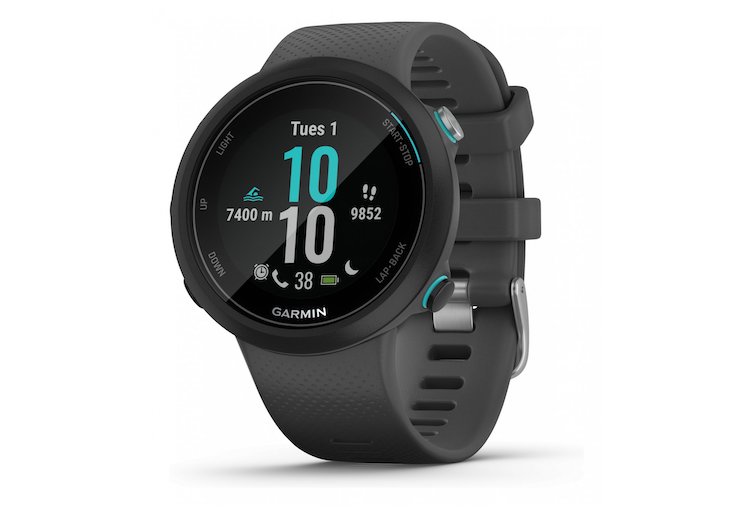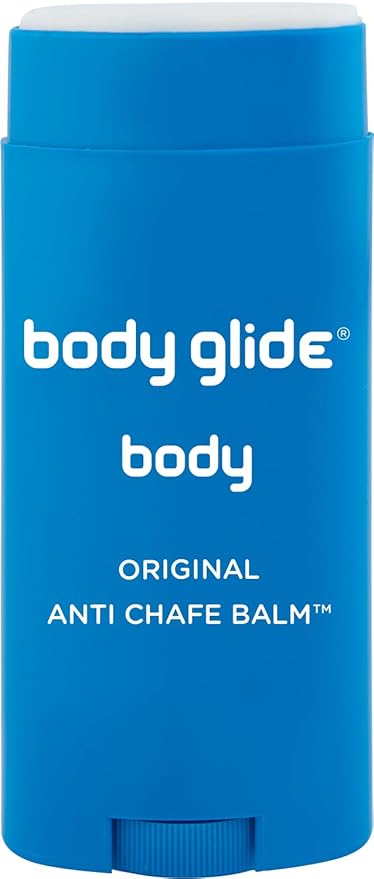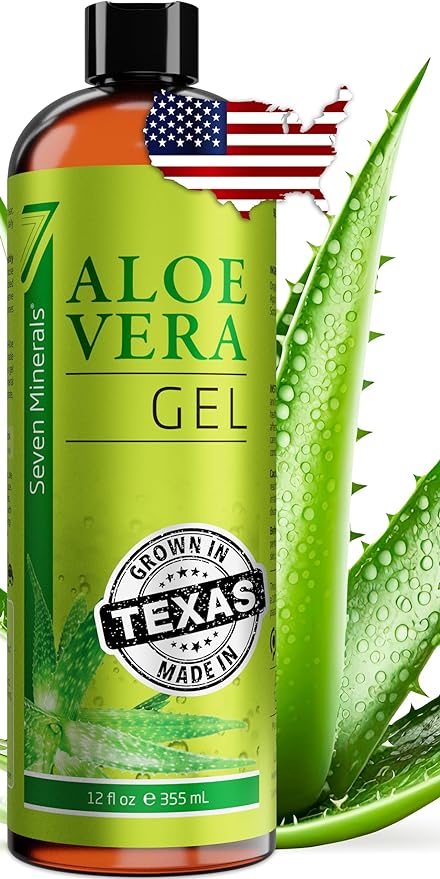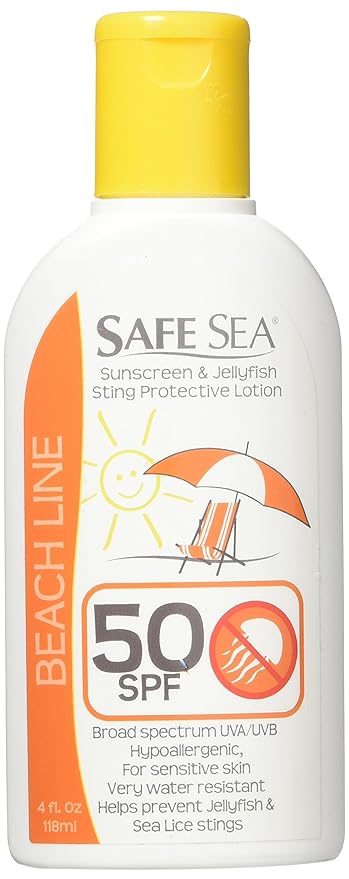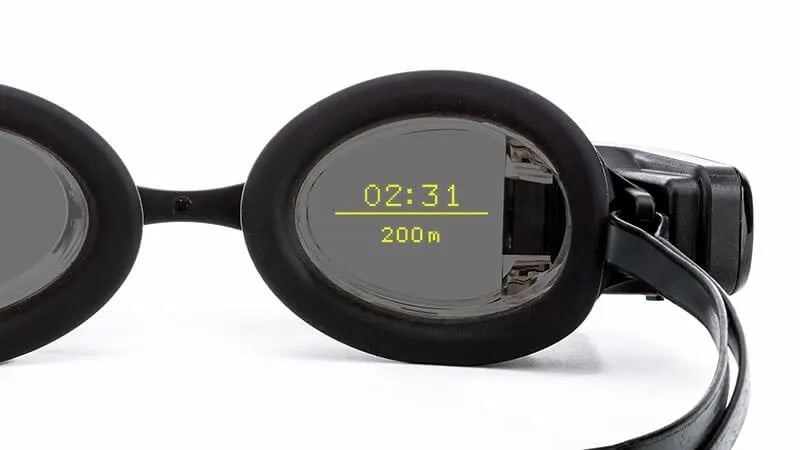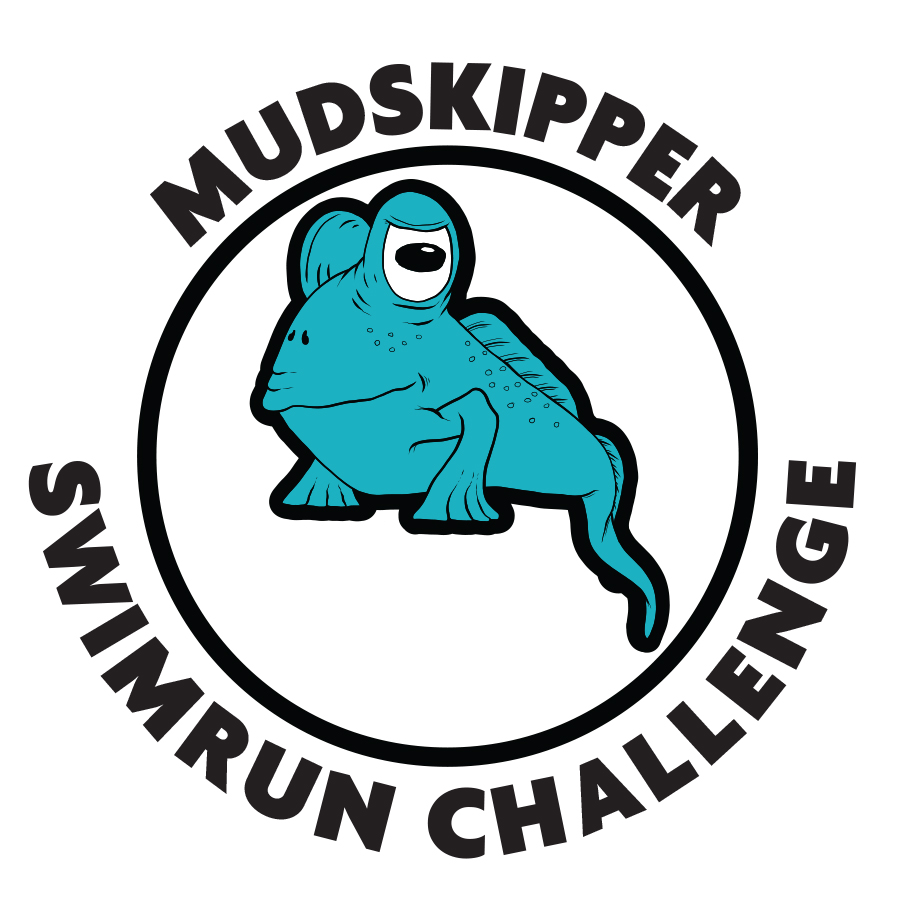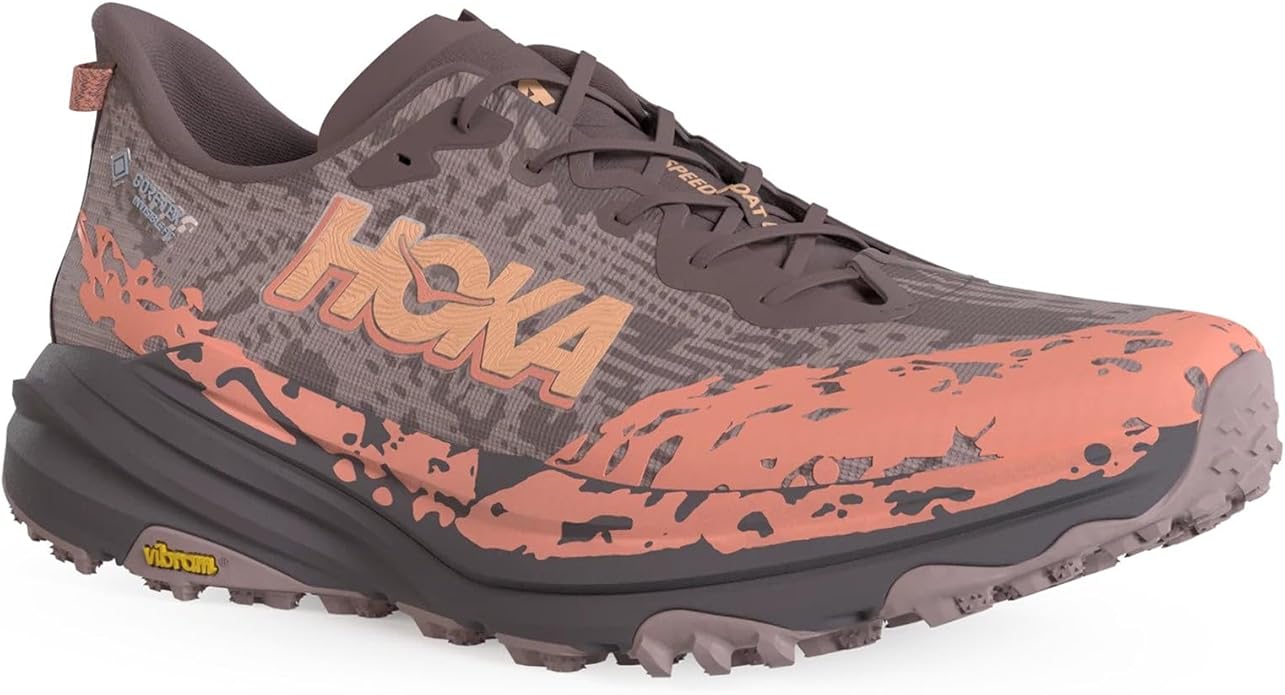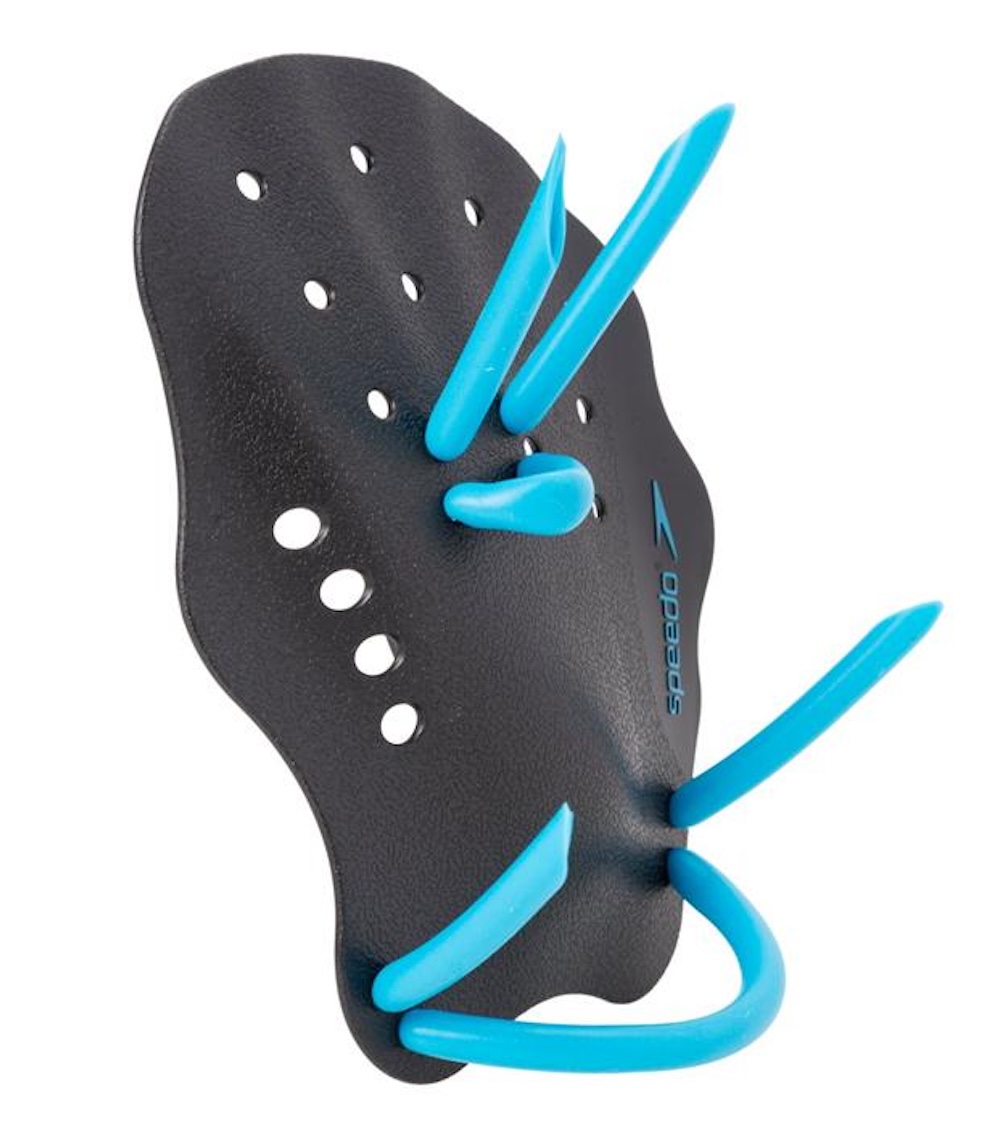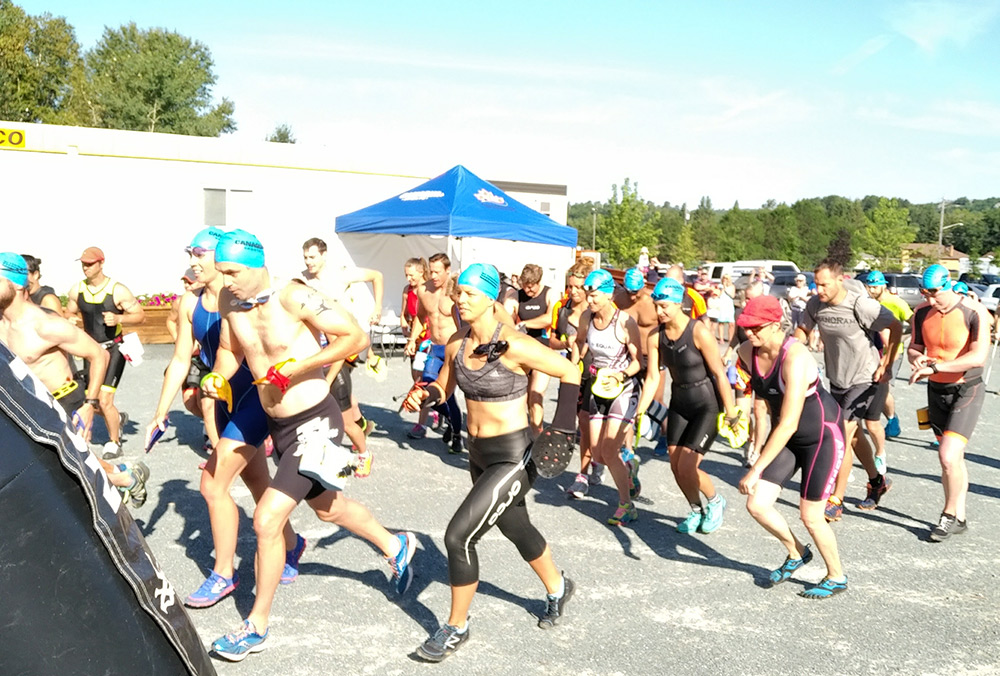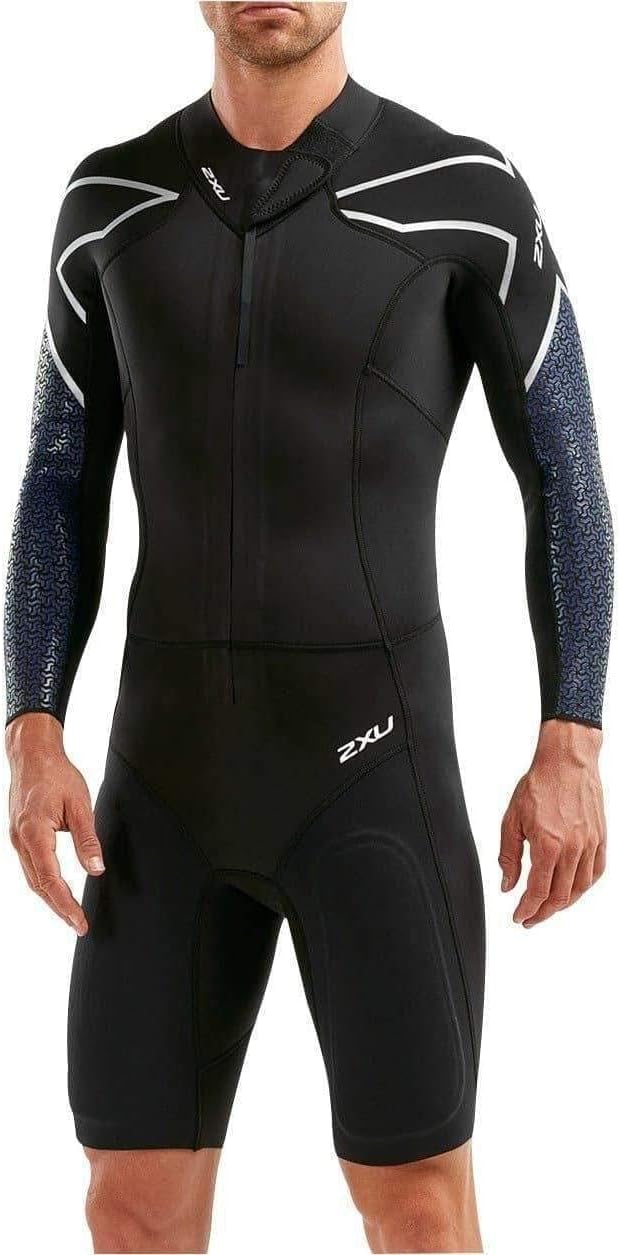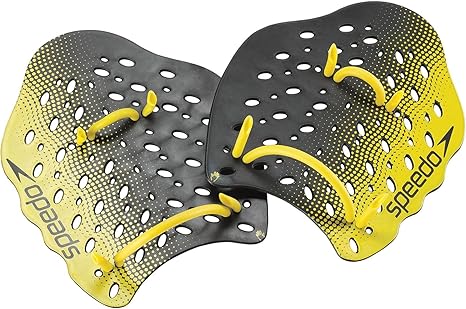Swimrun Injuries
By Richard Mitchell and Mogsy Ford
Updated January 2025
Swimrun injuries are part and parcel of training and taking part in races. Like any sport, there is always a risk of something happening that may result in an injury of some sort. Let's look at the most common risks, and how to minimise them.
Some types of injury may be obvious, while others may be peculiar to the sport of Swimrun. Let's take a look at possible injuries, starting from the ground (feet) and working our way up to the head!.
For great accuracy and detailed swimming data, check out the Garmin Swim 2 GPS smartwatch for the pool and open water!
For more information and the best price check out Amazon HERE!
Swimrun Injuries
- Feet
Foot injuries. When you're doing a lot of running in training, you are likely to pick up any of the common runner's problems, such as blisters, toenail loss, and plantar faciitis. The risk is lower compared to runners who train and race on roads, because in Swimrun you are alternating run sections with swim sections, so your feet get a bit of a break!
Prevention; The best way to avoid blisters and
toenail problems is to make sure your swimrun shoes fit properly, and to
use high-quality socks. You can also apply a small amount of Vaseline or Body Glide between your toes.
Knee Injuries
Knee injuries. These may affect either internal ligaments or external cuts and grazes. As with feet, if you are running any distance at all in training and racing, there is always a chance of twisting an ankle or knee, or straining or damaging muscle or ligaments such as the ilio-tibial band.
There are some things you can do to reduce the risks;
- always warm up and stretch properly before running
- always take time to stretch thoroughly after running
- see a a sports physio regularly for sports massage
You can pick up external cuts and grazes on your knees during the transitions between swimming and running, as these frequently involve going over uneven terrain. It's easy to catch your knee on a rock, stone or thorny bush as you make your way into the water or out of the water.
Prevention: There are 2 ways to reduce the risk of knee cuts and grazes.
First, you have to practice running over rocks and boulders! Take it slowly at first, then gradually build up speed.
Second, on Race Day, take your time, look ahead for your next step, and be prepared to help your team mate keep their balance.
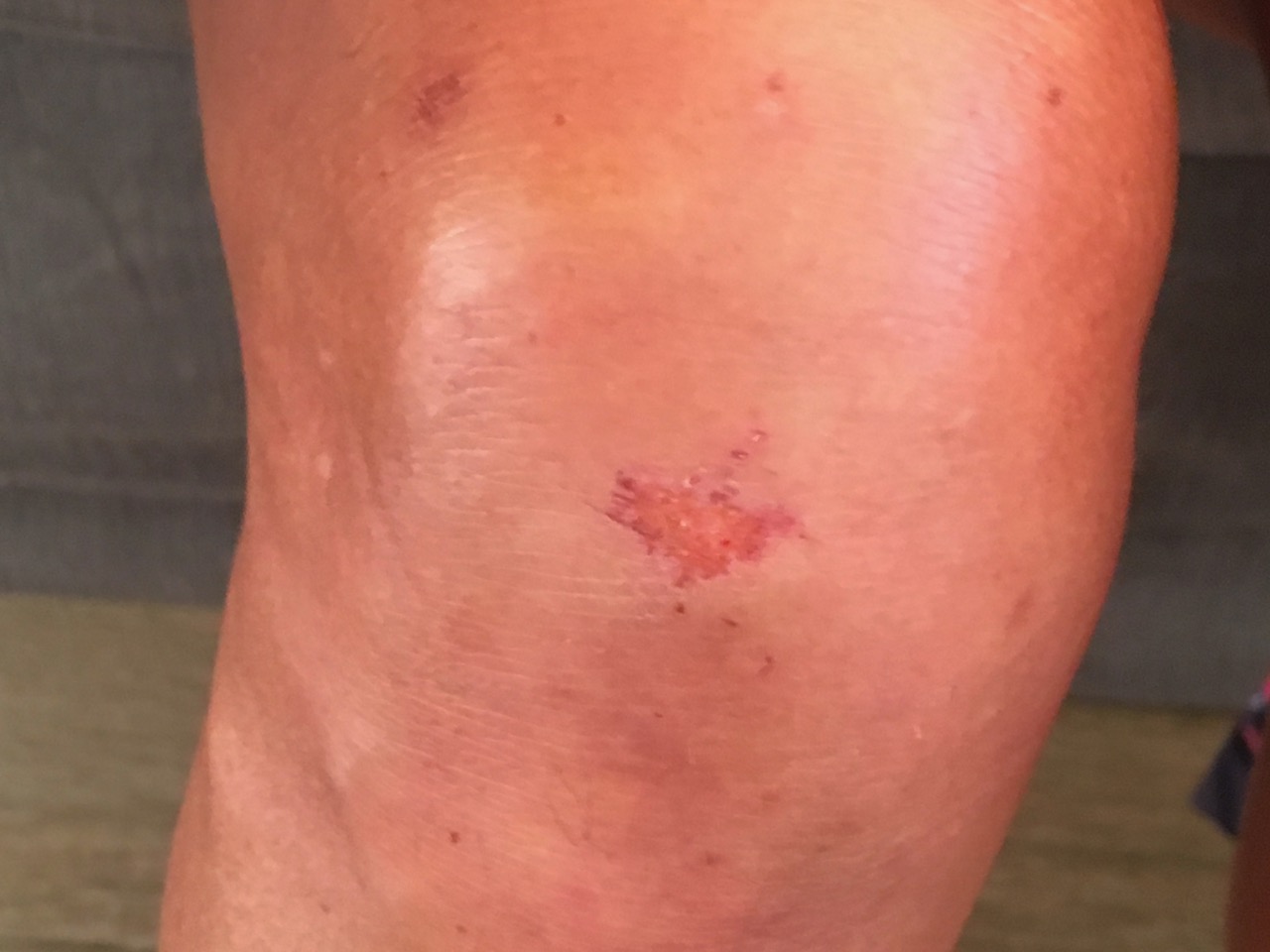 Knee abrasion
Knee abrasionThigh Injuries
Inside thighs. This involves wetsuit seam abrasion, especially in salt water. Over shorter distances, this is less of an issue, but when you spend 3 hours or more swimming and running in your wetsuit, you may find that the seams inside your wetsuit down the insides of your legs starts to rub as you run.
And if you are swimming in salt water, it's even worse, as the saltwater can dry and leave raw salt behind. You end up with an abrasion on the skin that is not actually that painful, but it gets annoying, and can take up to a week to heal.
Prevention: The best solution I have found is to apply Body Glide directly to the wetsuit seam itself. I literally plaster the seam with Body Glide, and it seems to last for the duration of a 5 hour + swimrun.
To help healing of an abrasion like this, I recommend a high-quality aloe vera gel. Here is a link to an aloe vera gel on Amazon that we recommend strongly.
Hand Injuries
Hands. Again, this involves cuts and grazes. This happens during the transitions from running to swimming and exiting swim sections. These are frequently over rocks and stones, and as you put your hands down to keep balance, it's easy to pick up a cut or abrasion. The risk increases with distance covered as you become more tired and more likely to fall.
Prevention: There are 2 ways to help reduce the risk of hand injury. First is to practice running in and out of water exits over rocks and stones. Start off slowly, even walking, and gradually build up the speed over a few months. This improves your balance and confidence.
The second way is to use your SwimRun paddles as protection. Again, you'll need to practice this, because the paddles are stiff, and can slip over rocks if you're not careful. But at least the plastic of the paddle is protecting your palm!
 Mogsy's hand after an Ötillö World Series race
Mogsy's hand after an Ötillö World Series raceArm Injuries
Arms. Yet again, cuts and grazes are the main issue. Swimrun injuries to your arms are much less common than to hands and knees, BUT when it happens, it's usually more severe.
The reason for this is that to injure your arm, you have to fall badly enough for your reflexes to take over and make you put your arms out for protection. If you fall on flat ground, you're probably OK, especially if you are wearing a long-sleeved wetsuit.
BUT if you fall on rocky ground, there's a chance that a sharp rock could penetrate the neoprene of your suit and cause a nasty gash.
Prevention: As before, practice running on trails and over rocky ground to improve your balance and confidence. You could also look for a wetsuit with thicker or tougher neoprene over the forearms, but this may make swimming harder.
As an example of swimrun injuries to forearms, below is a photo of Mogsy's arm after getting some stitches after an Ötillö World Series event. She fell awkwardly about 2 hours into the race, with sharp rocks cutting through her wetsuit sleeve.
After stopping to check the gash, we decided that a waterproof bandage would not work well, but the pressure of the wetsuit sleeve seemed to be enough to reduce the bleeding. Fortunately, although the wetsuit sleeve was cut, it was still intact enough to act as a pressure dressing.
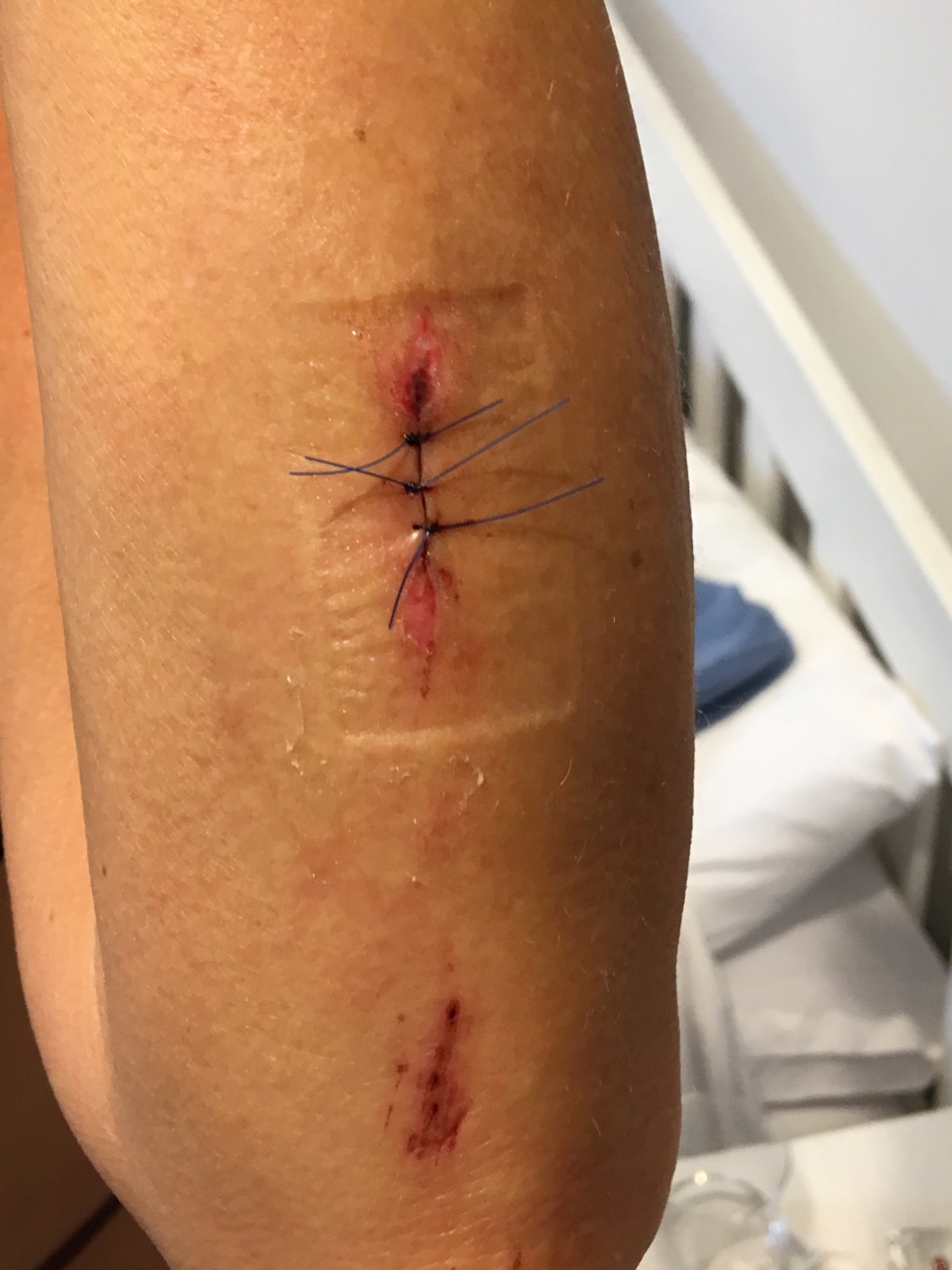 Mogsy's arm after an Ötillö World Series race
Mogsy's arm after an Ötillö World Series raceSwimrun Injuries
- Neck
Neck. This takes the form of wetsuit abrasion. This is similar to the wetsuit seam abrasion on the insides of your thighs, but this time it's not caused by a wetsuit seam.
Also called the "Ötillö Kiss" or the "SwimRun Kiss", the abrasions around your neck after a long swimrun race are caused by the edge of the wetsuit neck rubbing on the skin of your neck as you turn your head to breath during the swim sections.
You don't get this much in swim run events of under 3 hours (either training or racing), but the risk of neck abrasions increases steeply for swimruns over 3 hours duration, and also if you are swimming in salt water. You don't notice it too much during the event itself, but you certainly do afterwards!
Prevention: As always, there are several things you can do to reduce the risk of neck abrasions during long events. The first and most obvious is to make sure that the neck fastening is closed correctly, without any exposed velcro that could rub. I have found that I cannot do this reliably every time by myself, and I have to rely on my team mate to check the closure for me!
The next thing is to apply a good quality lubricant such as Body Glide. The best way to use this is to apply it directly to the skin around your neck, and also directly to the inner side of the wetsuit neck.
The third thing is to make sure you do enough long training sessions to build up the skin resistance before the Race Day. Your skin will gradually become slightly thicker and more resistant to abrasion.
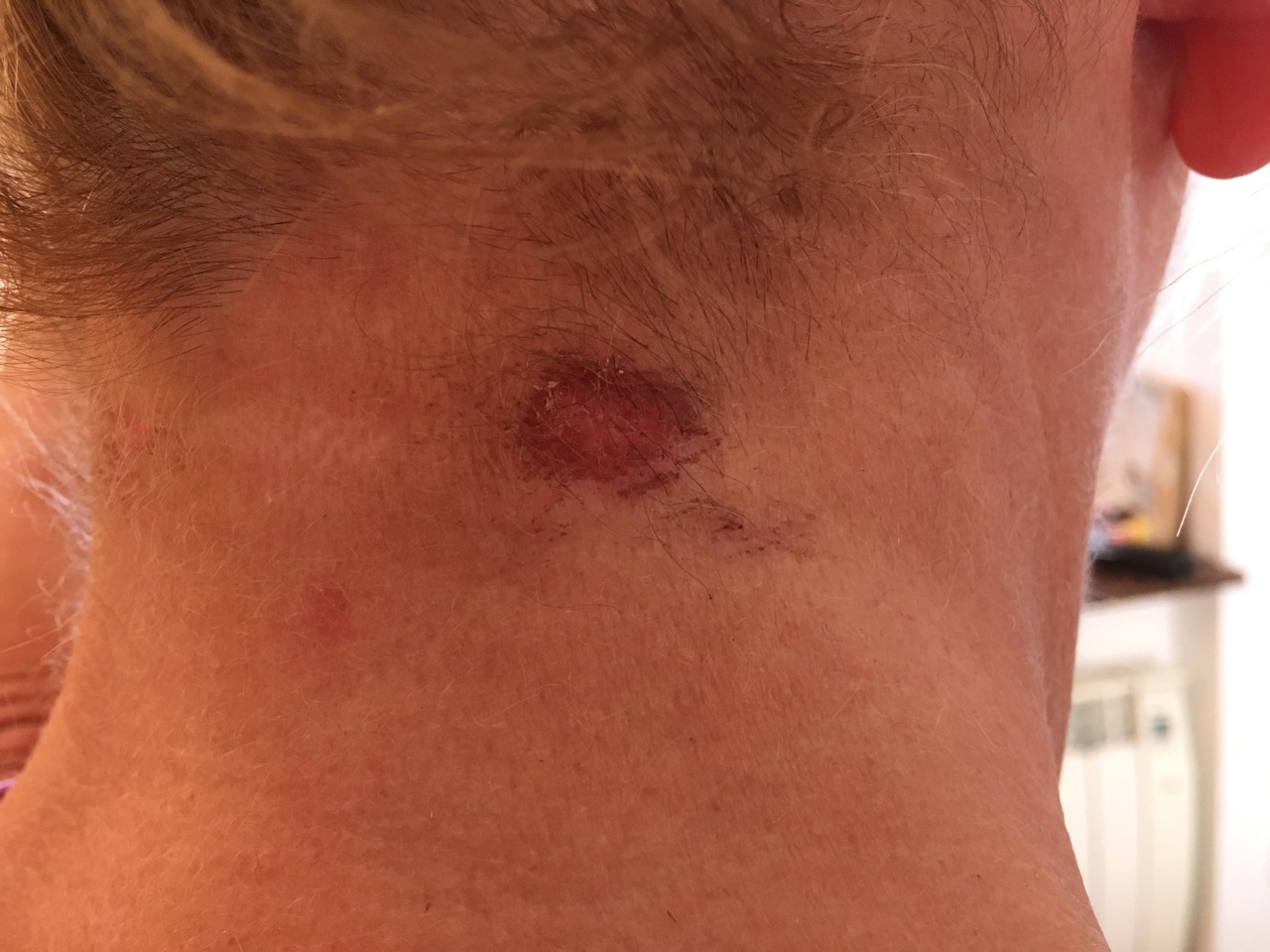 Neck abrasion after an Ötillö World Series race
Neck abrasion after an Ötillö World Series race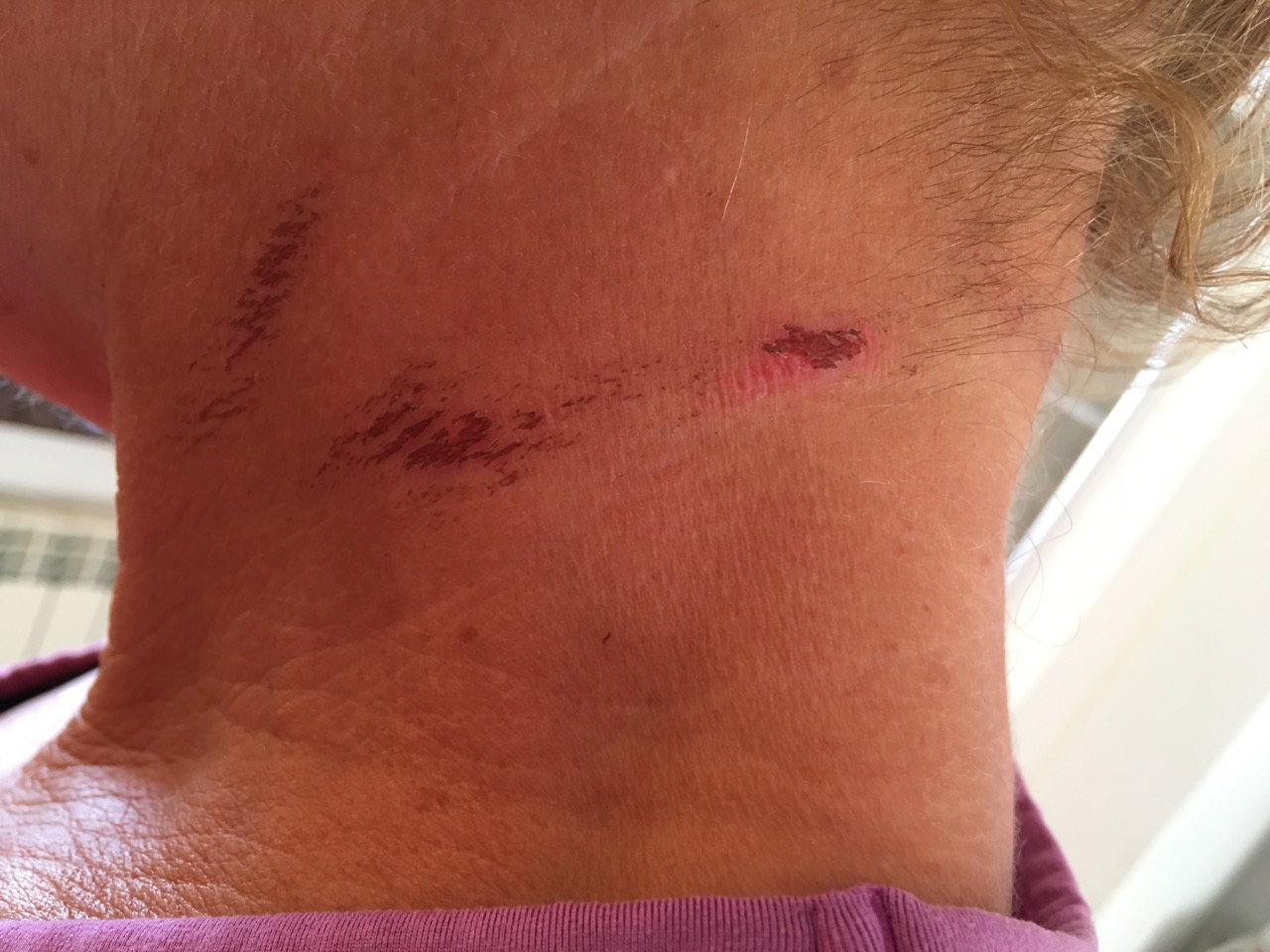 Neck abrasions after a World Series race
Neck abrasions after a World Series raceSunburn
Sunburn. This depends on where you are training and for how long. But you can pick up some severe sunburn even in cool conditions, because ultra-violet radiation can penetrate clouds. The worst affected area will be your face and around your neck.
When you are out training and racing for 3 to 6 hours, you will be exposed to significant levels of UV radiation. Don't underestimate the risks!
Prevention: The best way to reduce the risk of sunburn is to use a high-quality sunblock, BUT it must be one with a high protection factor, and water-resistant.
We strongly recommend Safe Sea, as this has an SPF value of 50, is water-resistant, AND ALSO protects against jellyfish stings! You can get it for a good price on Amazon HERE.
Safe Sea is a dense white cream, and I always apply a THICK layer (or even 2 layers 10 minutes apart) around my neck and my cheeks and nose.
Jellyfish Stings
If you are swimming in the sea, there is always the risk of jellyfish stings. When wearing a wetsuit, most of your body is covered, but usually your face, hands, and lower legs will still be exposed.
If you are in warmer waters during swim training, (I am on Malta), you are frequently swimming in just a swim suit or tri suit. I usually keep an eye out for 'jellies', but recently I was caught unawares on a 2km swim.
I saw nothing, but at 30 second intervals I experienced what felt like electric shocks, first on my forearm, then shoulder, then extreme pain under my left arm.
Fortunately, I was on the final 200m of the swim, and continued back to shore. Then I could see the red welts from the stings, and my fellow swimmers confirmed that they had seen jellyfish.
I took some anti-histamines, some ibuprofen (anti-inflammatory), and applied hydrocortisone cream, but 3 days later I was still in pain. I should have either worn a wetsuit or covered myself in SafeSun cream!
As mentioned above, check out SafeSea at Amazon for protection against jellyfish.
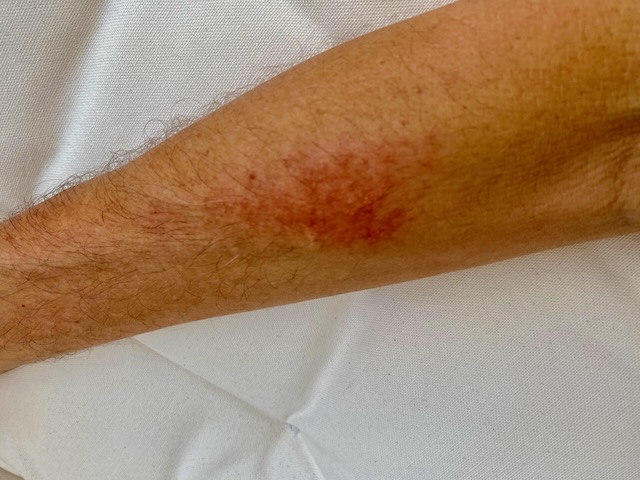 Jellyfish sting on my arm.
Jellyfish sting on my arm.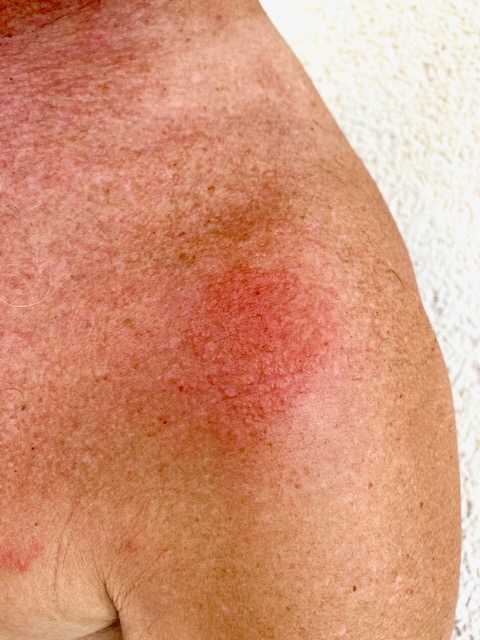 Jellyfish sting on my shoulder.
Jellyfish sting on my shoulder.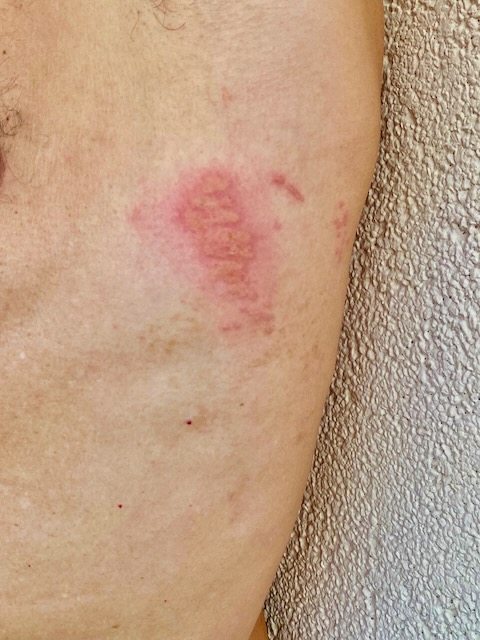 Jellyfish sting rash under my left arm.
Jellyfish sting rash under my left arm.Hypothermia
Hypothermia. This one is potentially dangerous.
Swimming in cold water for long periods of time can result in a gradual reduction in body core temperature. This is difficult for the affected person to notice, because it happens slowly.
This is one of the reasons why traditional SwimRun races of longer duration were always team events. You and your team mate are looking out for each other the whole time.
How do you know if you are starting to suffer from hypothermia? It might sound like a stupid question - after all, you will be feeling very cold! But that's not the whole story. We all feel cold during a long swim section in cold water, some people more than others.
The first sign that you may be in trouble is uncontrollable shaking. Your body is not just shivering - you are actually shaking, as your body attempts to initiate muscle contractions to generate some heat. When you get out of a long swim, you are already fatigued, cold, and tired. When the shaking starts, it burns even more energy, but doesn't really help your core temperature much.
The next sign is making bad decisions. I noticed this in a World Series race in the Isles of Scilly, U.K.. I had been feeling very cold for about 2 hours, and as we entered the water for what proved to be our last swim, I elected to swim around a patch of seaweed rather than through it. This meant that we had almost twice as far to swim, and the course I chose then put us smack into the middle of a very strong tidal current.
I knew about the current beforehand, but still made a bad decision, and I was wondering to myself why I had done that as we battled our way to the opposite shore. I couldn't work it out.
But I realized what was happening when we made it to the beach, exhausted.
I experienced the third signal that I was in serious trouble;
I started to feel that the water was WARM.
I actually wallowed around in 2 feet of water for a minute, enjoying the 'warmth'.
BUT the water was, in reality, just as cold as it had been all day, around 10 degrees Centigrade.
What happens is that the blood circulation to the skin surface starts to shut down. All the surface blood capillaries contract, as the body tries to reduce further heat loss through the skin. With only a limited circulation, the skin surface cools down rapidly, and becomes slightly colder than the surrounding water.
If your skin surface is colder than the water, then you get the sensation that the water is WARM. This is when it can become dangerous.
In a jolt of reality, I knew what was happening, and got out of
the water. Fortunately we were at an Energy Station on the race course,
and I was able to get my wetsuit top down and dry off with towels and
warm up with a thick jacket kindly donated by an onlooker.
Hypothermia
Prevention: This might seem obvious; just get a thicker wetsuit. BUT in swimrun this is not a practical option, because you have to be able to run in the suit too. But there are some tricks you can use.
- Find out the water temperature you can expect beforehand. This will tell you if the water is significantly colder than you are used to. If it IS colder, then you need to consider the following options.
- Do not swim that day. This is the safest option if you have no additional gear, and it is only a training session.
- Make sure to have a long-sleeved wetsuit. While nearly every swimrun wetsuit will be cut above the knees for running, some will also have short arms. For cold water swimming you need LONG arms on the wetsuit.
- Use a neoprene helmet under your swim cap. You lose most of your body heat through your head, as the brain has a huge blood supply with only a relatively thin skull for insulation. A neoprene helmet can make a big difference, without slowing you down on the run sections.
- Use neoprene calves. These are like footless socks that just go over your calves, and they have several advantages. First, you get extra insulation for your lower legs, helping to reduce heat loss. Second, you get extra buoyancy, helping to keep your legs higher in the water. Third, you get some protection against rocks during the swim exits. You can either buy neoprene calves directly, or cut off the legs of a long-leg suit, as explained HERE on our wetsuit page.
- Use a cashmere wool vest under your wetsuit. This sounds like a strange one, but is recommended by Swedish company Ötillö for cold-water swimming. The vest traps an extra layer of water next to your skin under the wetsuit, which stays warm from your body heat. This extra layer is not washed out as quickly while swimming, so reducing heat loss.
- Look at one of the newer wetsuits that uses Limestone - these are 30% warmer and 30% more buoyant, like the Zone3 Evolution suit.
We hope this guide to possible SwimRun injuries is useful. It's been written from personal experience! Please contact us if you have experienced any other injuries during SwimRun that we have not included here.
Monitor your activity and performance while you are swimming with the
CLICK HERE for further details and the BEST PRICE at Amazon!
www.swimrun-advice.com works with the following Swimrun companies:
